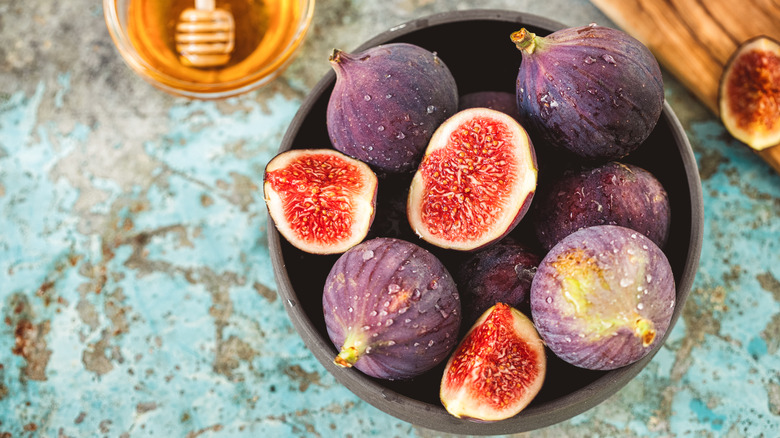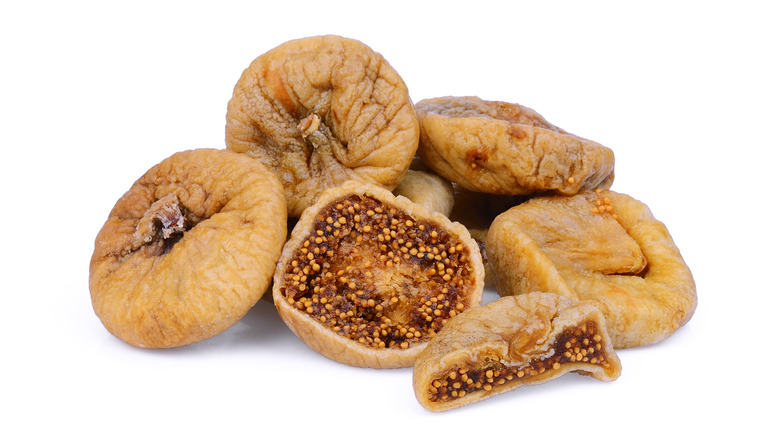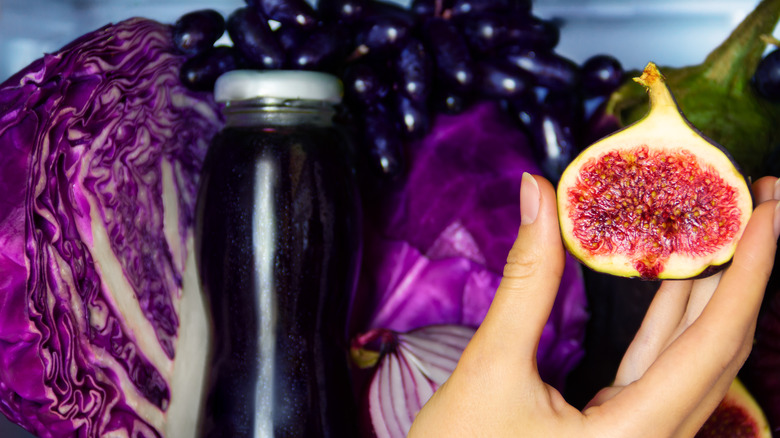Why You Need To Store Fresh Figs In The Fridge As Soon As You Buy Them
When you're craving sweets but don't want candy or cake, turn to fruits. Coming in many shapes, sizes, colors, and unique flavors, one of the tastiest fruits of them all is a fig. With their smooth, mapley flavor and jammy texture, these tree-growing, wasp-pollinated fruits are equal parts delicious and nutritious. But knowing how to store figs is essential for getting the most out of them, and surprisingly, fresh figs should be refrigerated immediately after you purchase or pluck them.
Some fruits like tomatoes, melons, pears, plums, and mangoes can benefit from sitting out at room temperature to ripen, but this isn't the case for the beloved fig. When left out at room temperature, fresh figs will wilt and quickly soften to an undesirable, slimy texture. Because cut fruit that's been left out at room temperature for more than two hours is a breeding ground for dangerous bacteria, refrigerating fresh frigs after cutting or slicing them is a critical food safety practice. But what temperature should you set your refrigerator to? Ideally, it should be set to at least 32 degrees Fahrenheit, but 37 degrees is the sweet spot.
Avoid washing figs as soon as you buy them, as this can also expedite the wilting process. Instead, give them a rinse and scrub just before consuming to reduce the amount of water that could potentially bog them down.
Dried figs versus fresh figs
We've established that fresh figs should be refrigerated to maintain quality in texture and to prevent the consumption of bacteria that cause foodborne illness. But what about dried figs?
If you're out of room in your fridge, good news — dried figs do not need to be refrigerated or stored in the same manner as their fresh counterpart. Water and moisture in produce are the primary hot spots for bacteria breeding, which is why dehydrated food, including dried figs, is shelf-stable. When stored in a cool, dark place such as a pantry or cupboard, dehydrated figs will stay fresh for at least a month. Although it's not required to keep them cold, keeping them in your refrigerator can lengthen their lifespan and extend their shelf life for up to six months. Try to avoid exposing them to moisture if possible, as this can rehydrate them and lower their lifespan to reflect that of fresh figs.
Recognizing signs of fresh fig spoilage
Fresh figs will last for up to seven days when refrigerated, but consuming spoiled figs is just one of many food safety mistakes that could be dangerous. Knowing how to recognize rotten figs is key to staying healthy and enjoying their decadent flavor.
Use your senses to determine whether or not fresh figs have gone south. If you notice that they have wilted or collapsed inward, it's time to toss them. Another indicator is leakage — there should never be any liquid oozing from the fruit, and though it might sound obvious, if you see mold or other organic growth on the interior or exterior of the fruit, you should immediately throw the figs out and replace them. Fresh figs have a sweet, floral, and woody aroma that is pleasant to the average olfactory system, so if you smell something sour, rotten, or generally intolerable, ditch them.
Whether you're using them to make homemade fig jam or enjoy them as a standalone snack, your fresh figs deserve a full lifespan, and the best way to avoid spoiled, wilted, icky figs is by refrigerating them as soon as you buy them. Remember — safe eating is happy eating!


